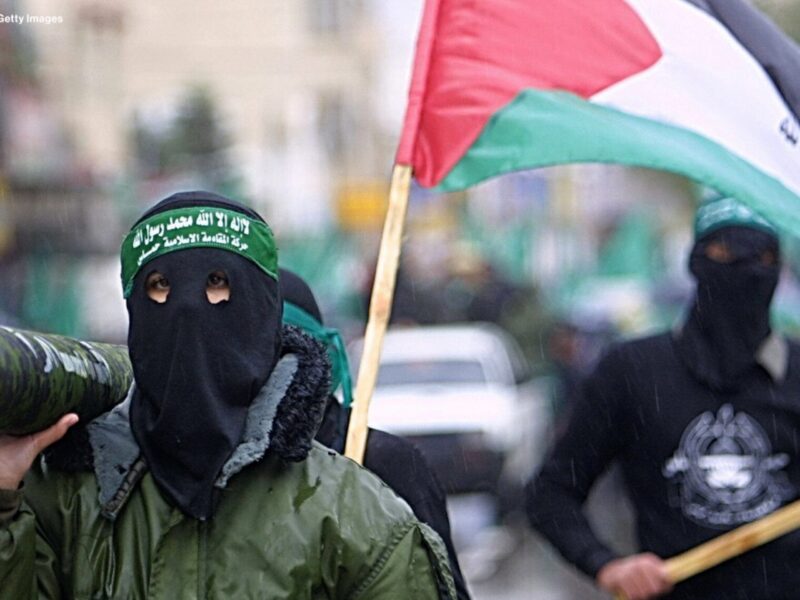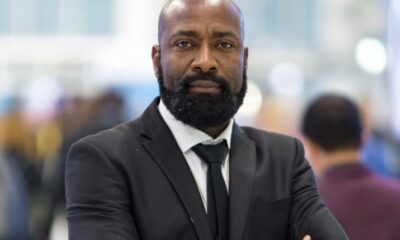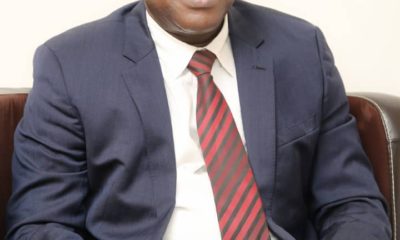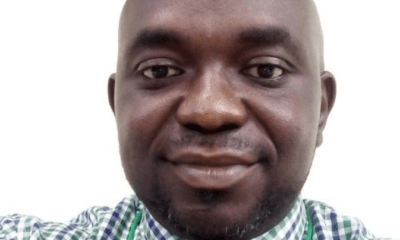Breaking News
Protesters from Columbia take over Hamilton Hall as the university standoff intensifies
According to an Al Jazeera investigation, the automobile was surrounded by Israeli tanks with their weapons aimed at it when it was fired upon. Additionally, it discovered that the PRCS ambulance had been completely wrecked and seemed to have been struck by a tank.

As the stalemate between Columbia University administration and demonstrators opposing Israel’s war on Gaza intensifies, students have taken over a building on campus.
Early on Tuesday, protesters took over Hamilton Hall at the university in New York, following the announcement by the administration that it had started disciplining students for failing to leave by Monday. The action poses a threat to intensify the standoff, which has resulted in nationwide demonstrations against Israel’s attack on Gaza, in which Israel has killed over 34,400 Palestinians.
Protesters on Columbia University’s Manhattan campus were captured on camera early on Tuesday locking arms in front of Hamilton Hall and lugging metal barriers and furniture inside.
Numerous demonstrators blocked the gates and raised the Palestinian flag through a window. The group that had taken over Hamilton Hall was distinct from the group camped out on the university grounds, according to a student organizer who talked with Al Jazeera.
Now that they are inside the building, the demonstrators will be kicked out.
Protesters claim to have renamed Hamilton Hall “Hind Hall.” It is one of several buildings on campus that were formerly occupied in 1968 during a civil rights and anti-Vietnam War demonstration.
“An autonomous group reclaimed Hind’s Hall, previously known as ‘Hamilton Hall,’ in honor of Hind Rajab, a martyr murdered at the hands of the genocidal Israeli state at the age of six years old,” Columbia University’s Apartheid Divest (CUAD), a coalition representing pro-Palestinian student organisations, posted on X.
According to the Palestine Red Crescent Society (PRCS), Hind Rajab was slain by Israeli soldiers. She had been pleading for assistance for hours with PRCS dispatchers after her family’s car was shot at in the northern Gaza Strip. She was the only one who had survived, but two PRCS rescue personnel who had been dispatched to get her in an ambulance were also discovered dead.
According to an Al Jazeera investigation, the automobile was surrounded by Israeli tanks with their weapons aimed at it when it was fired upon. Additionally, it discovered that the PRCS ambulance had been completely wrecked and seemed to have been struck by a tank.
A play-by-play of the hall’s takeover was aired by student radio station WKCR-FM. The protesters had ignored the Monday 2pm deadline to vacate the encampment of roughly 120 tents or face punishment. Columbia claims that it has started to carry out that threat.
Students want to stay at the hall until the university accedes to their demands, which include complete divestment from assets in Israel, financial transparency regarding financial ties to the nation, and immunity from disciplinary action for all students taking part in the protests, according to protesters on X.
“We demand our voices be heard against the mass slaughter of Palestinians in Gaza,” their post said, adding that they hold Columbia University as “complicit in this violence and this is why we protest”.
Student protests in Hamilton Hall itself have a lengthy history. Anti-Vietnam War demonstrators renamed the hall “Malcolm X Liberation College” and trapped themselves inside it in 1968. Additionally, three weeks of student blockades in 1985 demanded that the university pull out of South Africa during the apartheid era. The structure was renamed “Mandela Hall” in honor of Nelson Mandela, the leader of the South African liberation movement and eventually president of South Africa after apartheid.
Campus restrictions
The administration of Columbia University stated in an email distributed on Tuesday that only on-campus students and key staff would be permitted entry to the university’s main Morningside campus, the site of the protests. Media access would also be prohibited.
“This access restriction will remain in place until circumstances allow otherwise,” the email said.
Al Jazeera’s Kristen Saloomey, reporting from outside the university, stated that she had been informed by a student organizer that the “mood was calm” inside. She also estimated that Tuesday’s student demonstrators outnumbered those on Monday.
“Clearly the university does not want a repeat of what happened two weeks ago when they sent the NYPD [New York Police Department] onto the campus to arrest students,” Saloomey said. “That only outraged the student community and brought more supporters out, and started this movement that we’re seeing nationally at other campuses.”
According to Saloomey, students were afraid that the police would be called in again and that the university management was under pressure from trustees to keep things under control before graduation celebrations in two weeks.
Nationwide crackdown continues
With an eye toward the end-of-year commencement ceremonies, universities around the United States are battling with the increasing number of protests.
While some are still engaged in talks, others have resorted to threats and physical action, which has led to altercations with law enforcement.
Police detained some protestors at the University of North Carolina in Chapel Hill on Tuesday morning as they cleared out one campsite.
TV footage from Monday night at Virginia Commonwealth University (VCU) in Richmond showed police assaulting and pushing away protesters; students claimed to have seen tear gas and pepper spray used.
Both domestic and foreign media outlets are still covering the protests.
Volker Turk, the top human rights officer for the United Nations, expressed alarm over the coercive measures taken to break up the protests on campus.
“Freedom of expression and the right to peaceful assembly are fundamental to society,” Turk said, adding that “incitement to violence or hatred on grounds of identity or viewpoints – whether real or assumed – must be strongly repudiated”.
The White House on Tuesday chimed in on the occupation of Hamilton Hall, calling it “absolutely the wrong approach”.
“That is not an example of peaceful protest,” a White House spokesman said.
However, one protester at the George Washington University in Washington, DC, site of another pro-Palestine campus demonstration, speaking to Al Jazeera’s Shihab Rattansi, disputed accusations of the protest movement, including attempts to mix anti-Zionism with anti-Semitism.
“Our demands are clear, they have nothing to do with the Jewish people,” Miriam, a George Washington student, said. “As a Jew myself, I feel more safe being Jewish here in this encampment than I do outside of this encampment. And that is because everyone here believes in collective liberation for all people, I know that I’m included in that.”
Calling demonstrations anti-Semitic is “a complete diversion tactic” to deflect attention from Israel’s Gaza war, according to Miriam.
















